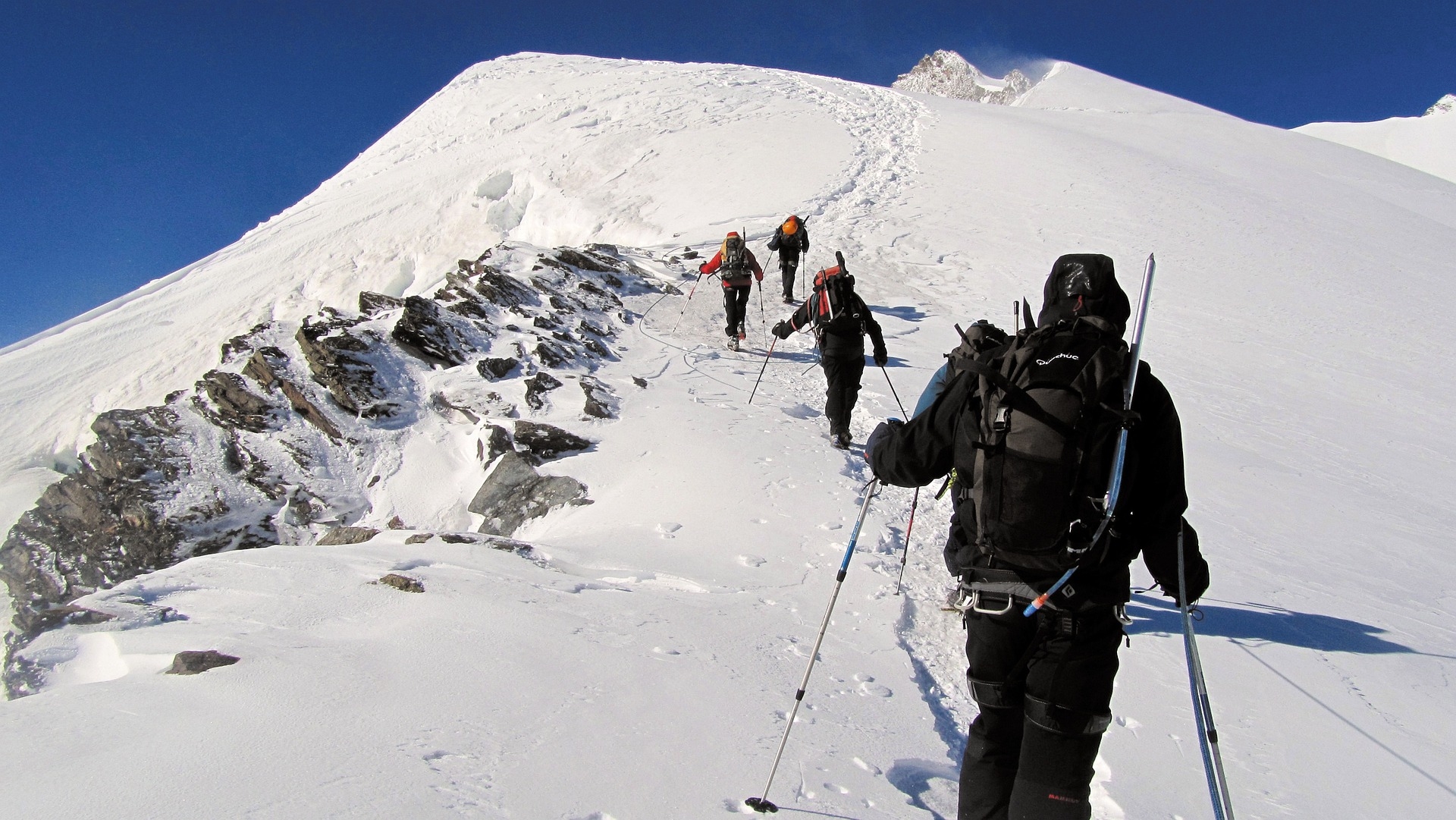

Located at the Sagarmatha region, of the eastern Nepal
,Meera Peak is one of the interesting peak Climbing destinations in Nepal . The
peak is relatively easier to climb for the trekkers and the climbers as it
stands at an altitude of around 6,476 meter. Nepal Meera Peak is an interesting
and fascinating destination for peak Climbing in Nepal as it contains three
major summits, namely: Meera North (6,476 metres), Meera Central (6,461 metres)
and Meera South (6,065 metres) as well as a smaller trekking summit; visible as
a distinct summit from the south but not as marked as on most maps of the
region.
The venture towards Meera peak begins with a mountain flight
to Tenzing Hillary Airport at Lukla from
Kathmandu, the capital . After a 35 minutes flight among the scenic
views of beautiful mountains nearby ,
we will reach the Lukla Airport . It is from here that the climbing venture
begins. Alternately, you can also embark on Meera Peak all the way from Jiri to
Lukla. On your way, you might as well enjoy the fascinating walk along the old
Everest route.
There are various ways of reaching the Base Camp apart from
the usual easy. If you want to view the panoramic views of the Himalayas like
Kanchenjunga, Makalu, the High Camp is a perfect retreat. Additionally, the
northern part of the peak Meera, is also known to be a straight- forward route
for climbing.
As you ascend, the trail leads you to Thuli-Kharka at 4,300 meters. The trek offers stunning views of the surrounding peaks and alpine landscapes. Thuli-Kharka provides a serene setting for your overnight stay, allowing you to acclimatize to the higher altitude.
Descend through lush rhododendron forests and picturesque landscapes to reach Kothe at an altitude of 3,691 meters. The trail offers a mix of terrains, and Kothe provides a tranquil environment for your overnight stop.
Trek to Khare, the gateway to Mera Peak, situated at 5,045 meters. The trail gradually ascends, offering panoramic views of the Mera region. Khare serves as the base for the Mera Peak climb, and you'll spend the night preparing for the ascent.
Spend the day at Khare for pre-climbing preparations and acclimatization. This involves checking equipment, reviewing climbing techniques, and ensuring everyone is ready for the challenging climb ahead. Rest and relaxation are essential before the summit push.
The climb to Mera High Camp at an elevation of 5,780 meters. The ascent involves negotiating rocky terrain and traversing the Mera Glacier. High Camp provides a strategic location for the final push to Mera Peak summit the following day.
The highlight of the journey – summit day. Ascend to the breathtaking summit of Mera Peak at 6,654 meters, taking in panoramic views of Everest, Makalu, Cho Oyu, and other surrounding peaks. After the exhilarating summit experience, descend back to Khare for a well-deserved rest.
Descend from Khare to Thagnak, retracing your steps through the stunning landscapes. The trek provides an opportunity to reflect on the successful summit and celebrate the accomplishment. Thagnak offers a comfortable overnight stop.
Continue the descent to Thuli-Kharka, enjoying the changing scenery and diverse landscapes. Thuli-Kharka provides a peaceful setting for your overnight stay, allowing you to relax and appreciate the journey.
Trek to Chutanga via the challenging Zatwar-La pass at an altitude of 4,610 meters. The pass offers stunning views of the surrounding peaks, and the descent to Chutanga allows for a mix of terrains and landscapes.
The final trekking day takes you back to Lukla, where you can reminisce about the challenging and rewarding adventure of Mera Peak climbing. The evening in Lukla provides an opportunity to celebrate the successful expedition.
Take a morning flight to Manthali/Ramechap and then drive back to Kathmandu. The scenic flight offers final views of the mountains, and upon arrival in Kathmandu, you'll be transferred to your hotel. It's a perfect time to relax and share stories of the climbing experience.
A free day is allotted for contingency or individual activities. You can explore more of Kathmandu, shop for souvenirs, or simply relax. It's a day to reflect on the climbing adventure and savor the mem
On the final day of your Mera Peak climbing expedition, our representative will transfer you to Tribhuvan International Airport for your international departure. With memories of the challenging climb, stunning landscapes, and the sense of accomplishment, you bid farewell to Nepal, carrying with you the experiences of a remarkable journey.
The Mera Peak Trek is considered a challenging trek, suitable for those with prior trekking experience. The climb to Mera Peak involves the use of basic mountaineering equipment, including ice axes and crampons, and requires a good level of physical fitness.
The Mera Peak Trek typically takes around 18 to 20 days, including acclimatization days and the climb to Mera Peak. The itinerary may vary depending on the specific route chosen and weather conditions.
While teahouses are available in the lower regions of the trek, as you ascend towards Mera Peak, camping becomes more common. Trekkers and climbers usually stay in tented camps during the higher altitudes.
The Mera Peak region is rich in Sherpa culture. Trekkers pass through several traditional Sherpa villages, monasteries, and experience the unique customs of the local communities.
Essential gear includes trekking boots, warm clothing, a down jacket, sleeping bag, climbing harness, ice axe, crampons, and other necessary mountaineering equipment. It's crucial to be well-prepared for cold and high-altitude conditions.




